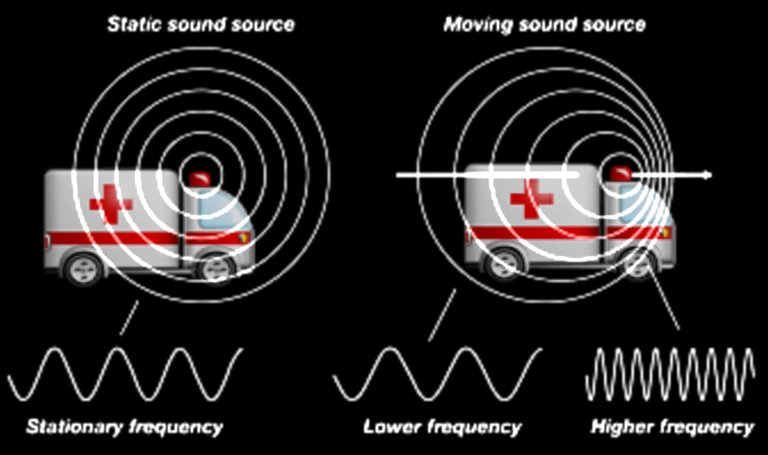
Eyesight is the most dominant sense that humans have. When we look around us we see the world in a myriad of different colors.
This light that we can see, however, is just a very tiny fraction of all the electromagnetic waves that are there in the universe. The part of the frequencies that we can normally see is in the spectrum of (4.3 x 10¹⁴) Hz to (7.5 x 10¹⁴) Hz
But the whole spectrum contains everything that we can't see from radio waves to gamma rays. [1]
Light is really just energy in the form of an electromagnetic wave, governed by this simple equation:
(E = hv)
Energy = Planck's constant multiplied by how fast the wave oscillates through spacetime. (the frequency) [2], [3]
The electromagnetic waves that are visible to us, are nothing special at all as that equation states, all electromagnetic waves are equivalent except for the fact that higher frequency waves are more energetic and lower frequency waves carry lower energies.
The speed at which those waves propagate at though is special.
All light is made of massless particles called Photons, as all massless objects, they travel at the maximum speed allowed by the universe. ✨
The universe has an upper limit to how fast information can flow from one part in it to another, a finite limit to the rate of this information travel, a speed that we call c, which assures that causation is preserved in the universe. And that's the speed at which light travels.[4]
We live in a relativistic world, and in our normal daily life we might not encounter this but the world can look very different if we approach those high speeds.
What would we see if we can travel at those very high speeds or closer to the speed of light?
We would be looking at a very different-looking universe, nothing like what it looks like when we are standing still.
What would we see, and why they would look that way?

The Doppler effect:
 Illustration made by Me using Picsart App and text emoji
Illustration made by Me using Picsart App and text emojiWell, the sound gets mediated through the air at a finite speed, it propagates in a circular wavefront, but because of the movement of the vehicle, each wavefront is sent out from a different position as it moves.
So the wavefronts get packed closer to each other in the direction of the movement, resulting in a higher frequency wave, so you hear a higher-pitched noise.
Similarly, after the ambulance passes you, those wavefronts get further apart in the opposite direction, resulting in lower frequency sound waves and hence the lower-pitched noise.
The soundwaves get stretched in the backward direction of the movement and they are compressed in the forward direction.[5]

Similarly, a light-emitting object that is moving at very high speeds compared to the observer will give out the same effect, but only on much larger scales, it can become visible. We can't see that on earth because the speeds we experience whether in a car or flying in an airplane are a very tiny fraction of the speed of light, but we can see that in the cosmos.
Looking in a telescope, we can see that most galaxies are red-shifted, we see the lower frequency waves just like when the ambulance was moving away from us, a few also appear blue-shifted because they are moving in our direction instead.[6]

Colors Distortion:
Well, our eyes can pick up certain wavelengths, and our brain interprets those as colors so we see what we see usually. A light with a wavelength of 700 nanometers, for example, gets picked up by our eye then our brain interprets that specific signal it receives as a red light.
What happens when we move towards that same light at super fast speed (say at 20% of the speed of light) is that we see the same light which was red as a yellow color light instead, due to the wavelength shift.
The light source didn't change, our eyes didn't change, but the relativistic doppler effect changes what we see when we are moving fast towards it.
Furthermore, that same light would be seen as green when moving towards it at 25% the speed of light!
And if we pass it and look behind us while moving at 20% the speed of light, it would be shifted into the infrared, so we wouldn't see it at all.
Similarly, lights that weren't visible to us, like infrared or ultraviolet, would become visible, and we would be seeing all sorts of different colors depending on whether we are moving towards their sources or away from them.[6]
Not only the color of the light would be seen distorted, but also its brightness. We would see lights bright towards the direction of our motion, and dimmer away from our direction of motion. Which is known as the relativistic beaming. [7]

It's NOT what it looks like:

From your frame of reference inside a spaceship moving at 60% the speed of light, you wouldn't feel any time difference, the clock would be ticking for you as normal.
However, time would slow down for you from a stationary observer's point of view by about 25%.
So an hour for you abroad the spaceship would actually be an hour and 15 minutes for that stationary observer!
And you'd notice that it took a shorter amount of time to arrive at a destination than you had expected.
Lengths would contract for you, a distance of 1 meter, for example, would become 80 centimeters instead, but even though objects would be squished from your frame of reference in that spaceship, you won't be seeing them like that.
What you'd see instead is objects curving away from you and rotating towards you, a trippy optical illusion, because the light coming from the further side of the object would be taking longer time to reach your eye than the light coming from the closer side of that object.[8]
Furthermore, objects would appear farther away than they actually are in your front view, and objects to your side and behind you, would be shifted towards your frontal view, what you would see when looking from the front, would appear like a fisheye view.

What really is true?
Is there really an objective reality? If it is what we would see with no movement, then what is 0 movement really? Because everything IS moving! On Earth, the galaxies, and everything in the whole universe is in motion relative to something else.
If we were on some different planet instead, moving really fast, light, and time for us would be very different than here on Earth, but we would think of THAT as an objective reality.
There is no absolute objective reality in this universe, the only truth is that EVERYTHING is relative!

● Thank you for reading ●
● •
1- Electromagnetic Spectrum | 2- Planck's Constant | 3- Planck Relation | 4- Causality | 5- Doppler Effect | 6- Relativistic Doppler Effect | 7- Relativistic Beaming | 8- Relativistic Aberration |


Banner by #theterminal







